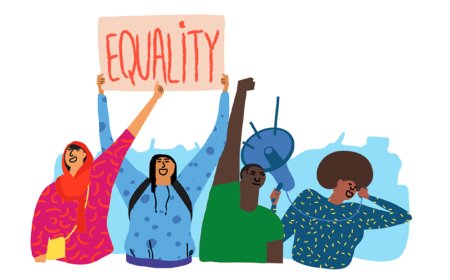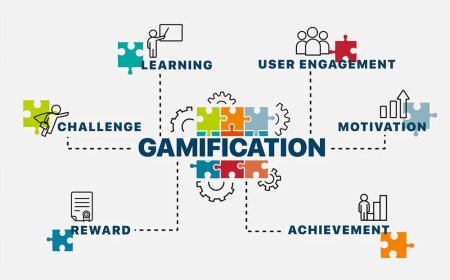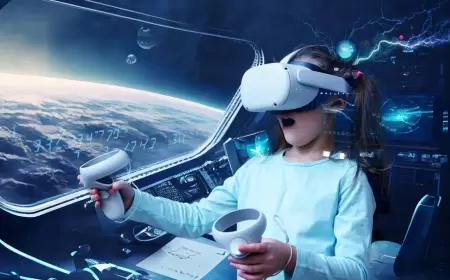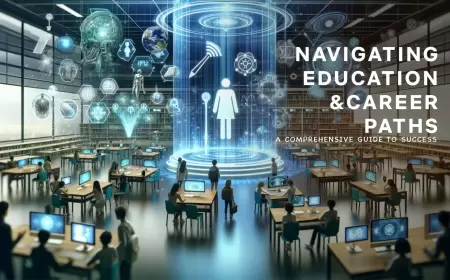The Future of Education: Trends and Innovations Shaping Learning
Discover the newest eLearning industry trends and breakthroughs. Discover how these innovations are transforming education, making it more interesting, accessible, and individualized. Examples include mobile learning, gamification, AI integration, and virtual reality.
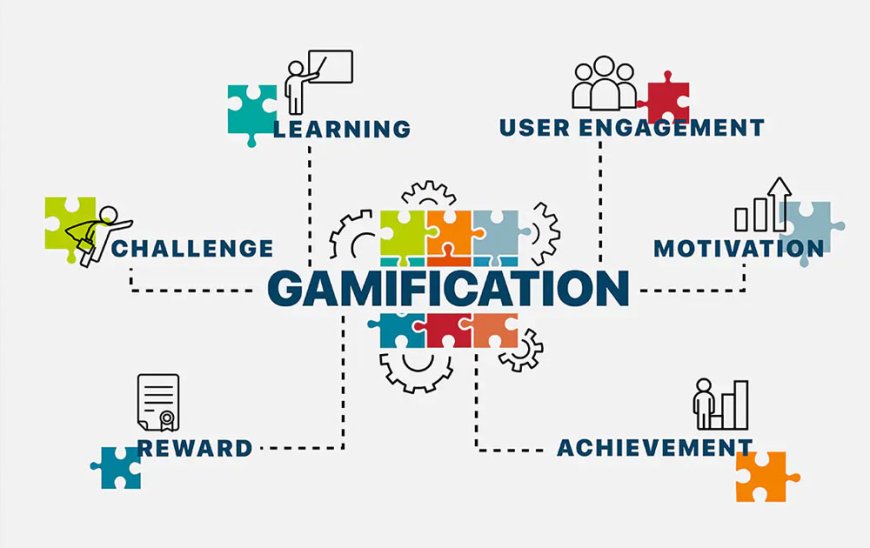
The eLearning industry has seen a remarkable transition as a result of ongoing technological improvements and shifting learner preferences. This article examines the developments and trends that have influenced the eLearning sector. eLearning has advanced from the early days of simple online courses to the inclusion of multimedia components, interactive simulations, and gamification. With the rise of microlearning and mobile learning, students may now access bite-sized knowledge wherever they are.
A customized and interactive learning environment is now possible because to the development of artificial intelligence, virtual reality, and augmented reality. This essay explores the fascinating advancements that have made eLearning a dynamic and efficient teaching tool.
Mobile Learning
The way individuals access educational information has changed as a result of the rise of mobile learning as a significant trend in the eLearning market. Due to the widespread use of smartphones and tablets, students may now learn at any time and from any location.
Because learners may access courses, modules, and materials while on the road, mobile learning is convenient. It enables a number of interactive features, including as films, tests, and debates, which improve engagement and memory. Additionally, many mobile learning platforms and applications offer offline access, enabling students to continue their studies even when there is no internet connection. Mobile learning continues to influence the eLearning sector by offering students seamless and convenient educational experiences as mobile devices become more and more interwoven into daily life.
Gamification
The eLearning sector has seen the rise of gamification as a potent tactic that is altering how students interact with course material. Gamification improves motivation, engagement, and memory retention by introducing game features like points, badges, levels, and leaderboards into the learning process.
It turns ordinary subjects into engaging, participatory experiences that promote healthy competition and a sense of accomplishment. Gamification also encourages critical thinking, problem-solving, and active learning. Gamification is being increasingly utilized by eLearning platforms and organizations to create meaningful and successful learning experiences for learners of all ages and backgrounds due to its potential to make learning pleasant and engaging.
Microlearning
Providing learners with little, bite-sized learning modules is the main goal of the well-liked eLearning strategy known as microlearning. These courses frequently feature succinct and focused material, enabling students to swiftly understand certain ideas or pick up new abilities.
Microlearning has a number of benefits, including greater adaptability, accessibility, and memory retention. Through a variety of devices, learners may interact with microlearning information whenever and wherever they choose. Microlearning is an excellent solution for those with hectic schedules and attention spans since it is brief and concentrated. It is also simpler to update and modify material because of its modular structure. In the eLearning sector, microlearning is a useful method for providing quick and interesting learning experiences.
Artificial Intelligence
The eLearning sector is undergoing a radical transformation thanks to artificial intelligence (AI). eLearning platforms can analyze enormous volumes of data and provide learners with customized learning experiences by utilizing AI technology. Individual learning styles and preferences can influence how information is delivered, and AI algorithms can provide specialized suggestions and evaluations. Intelligent chatbots and virtual assistants improve learner assistance by giving prompt feedback and direction.
Analytics enabled by AI help teachers make informed decisions by giving them useful information about student engagement and performance. The delivery of education is becoming more efficient and effective because to AI's capacity to automate operations and streamline procedures. AI is continuing to transform eLearning, enabling both students and teachers.
Virtual Reality (VR) And Augmented Reality (AR)
In the eLearning sector, virtual reality (VR) and augmented reality (AR) have become transformational technologies. Through interactive simulations and situations, VR generates realistic, computer-generated landscapes that mimic real-world experiences. By adding more context and interactive components, augmented reality (AR) improves the learning environment by superimposing digital information on the actual world. Through exploration and interaction, these devices help students better comprehend, remember, and build practical skills.
VR and AR are redefining eLearning by delivering extremely engaging and dynamic learning experiences that bridge the gap between theory and practice, from virtual lab experiments to AR-enhanced textbooks.
What's Your Reaction?
 Like
0
Like
0
 Dislike
0
Dislike
0
 Love
0
Love
0
 Funny
0
Funny
0
 Angry
0
Angry
0
 Sad
0
Sad
0
 Wow
0
Wow
0











